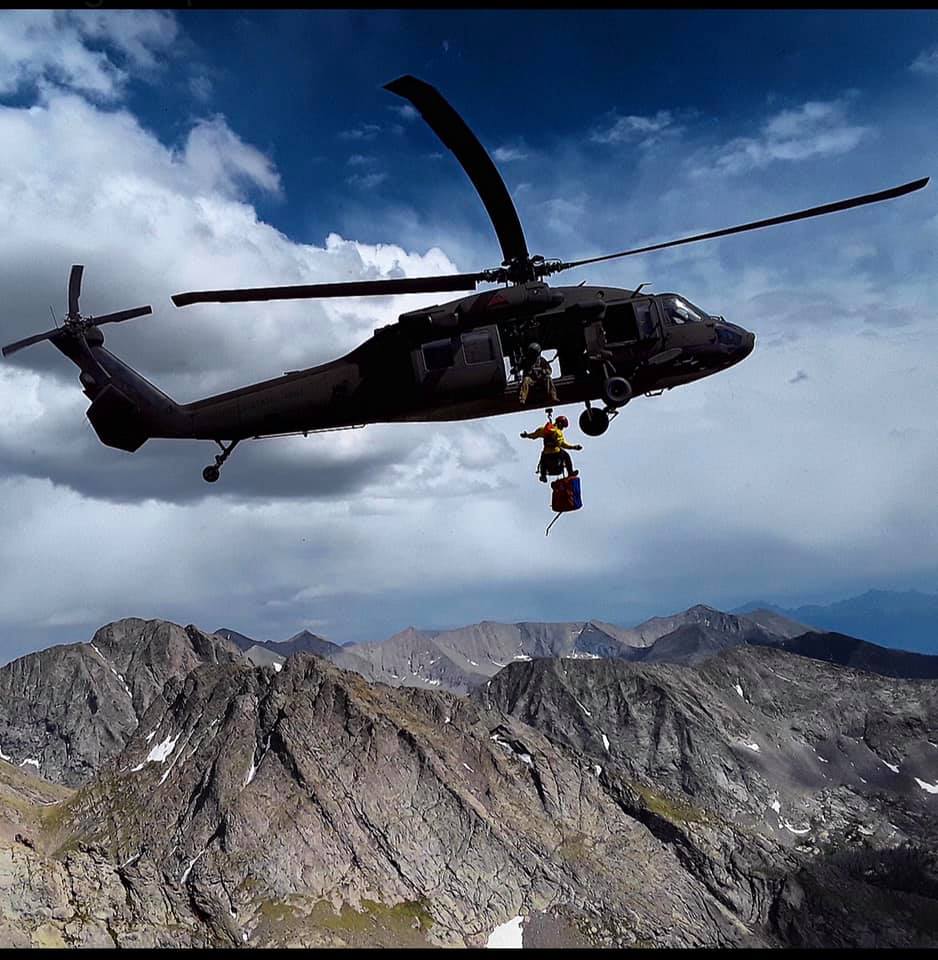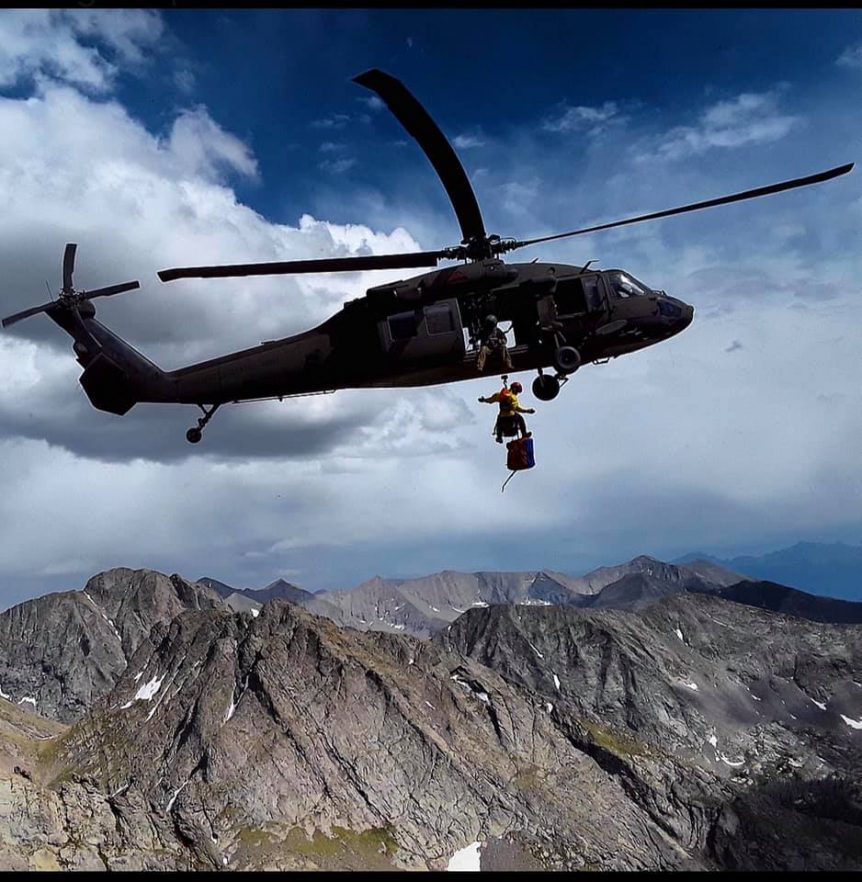
The 911 call came in as a distress call from a hiker who had been hit by rockfall and had a badly broken hand. The local backcountry search and rescue (BSAR) team’s incident coordinator put in a request for a helicopter from the Colorado Army National Guard due to the remote location of the patient and the time it would take to evacuate her on foot. But when the helicopter crew reached her, they described the injury as a scrape on the woman’s hand. BSAR communications are often hampered by poor or no cell phone reception, static-filled radio transmissions, and the inevitable mistranslation that happens when a message is passed repeatedly from one person to another.
Here in Colorado, our BSAR teams are fortunate to have state and federal aviation resources such as the Colorado Army National Guard (COARNG), the Colorado Division of Fire Prevention and Control (DFPC), Mesa Verde Helitack, and the Colorado Wing of the Civil Air Patrol (CAP). BSAR teams also partner with various air ambulance services across the state when they need air support or patient transport. CDFPC and the CAP can provide multi-mission aircraft (MMA) services, which means they have fixed-wing aircraft with specialty equipment for aerial searches. DFPC’s helicopters are also available for rescuer insertion and patient extraction when they are not fighting fires, and some BSAR teams train monthly to be able to load and unload from a hovering DFPC helicopter (the “STEP” program). The COARNG can provide helicopter support for search, evacuation and rescuer insertion not only by landing the helicopter, but also by using a hoist. CSAR trains with all of these agencies on a regular basis under the Colorado State Aircraft Program.
One of CSAR’s many functions is to coordinate requests for COARNG’s, CAP’s and DFPC’s services for sheriffs and BSAR teams. Our state coordinators provide situational awareness, coordination and communication to support all the players and make sure everyone comes home safe at the end of the rescue. The most complicated of these aviation requests is for a hoist rescue. When the terrain is so rugged there is no viable landing zone, that’s where hoisting comes into play with the Colorado Hoist Rescue Team (CHRT). This team is a unique, collaborative alliance of the COARNG and specially trained members from four mountain rescue teams – Mountain Rescue Aspen, Vail Mountain Rescue, Alpine Rescue Team, and Rocky Mountain Rescue Group. The COARNG flight crew picks up a pair of rescue technicians from one of the four teams to participate in the hoist operation, whether it be hoisting an injured subject, inserting a rescuer, or both.
There is a multi-step process for ordering a hoist, starting with a 911 call from a rescue subject. Local incident coordinators and/or county sheriffs must first verify that no available civilian air resources are able to do the job. Then, subject matter experts from the COARNG must do a risk assessment in consultation with CSAR to determine if a hoist is appropriate. The criteria for a COARNG evacuation is that life, limb, or eyesight must be threatened or rescuer safety at stake. CHRT members accept the risks these incidents pose, but only when there is truly a need. Jeff Sparhawk, CSAR’s executive director, comments, “Luckily for the residents and visitors to Colorado, COARNG flies missions each year in which the patient would likely have died or been permanently disabled if a helicopter had not been available.” Marc Kudlac, DFPC’s aviation resource manager and chief pilot, adds, “What is most important in our collaboration with CSAR is determining how best to keep everyone safe through risk analysis and airspace deconfliction.” Airspace deconfliction means ensuring that all parties are aware of what aircraft is in the airspace at the same time.
As an example of inappropriate public expectations, during a late spring mission on one of Colorado’s more challenging fourteeners, several technical rescue team members climbed for eight hours to provide equipment and support to rescue subjects who had become stranded in ice and snow after losing their ice axes and ropes. The subjects had asked via cellphone for a helicopter but had been told that no helo would be available until the next day due to dangerous flying conditions. When the rescue team members reached them, they declined assistance and said they were tired and would prefer to stay overnight and wait for a hoist the next morning.
Helicopters are a great tool as a last resort in a dire situation, but they are not an Uber. We consider all other available resources before asking for these state and federal assets. A helicopter hoist operation is a specialized, dangerous, expensive process, and for 99% of SAR incidents, it isn’t the best answer. Most incidents require “ground pounders;” teams of rescuers that come in on foot.
Backcountry recreationists who venture into terrain above their skill, experience, and equipment level would be wise to remember that there is likely no quick and easy evacuation available if you end up needing a rescue. If you’re able to make a call for help — a cell signal might not be available — BSAR operations take time to organize and mobilize. If it took you hours to get where you are, it will take rescuers just as long. The use of a helicopter in a search and rescue operation should never be an expectation. It is the exception.

